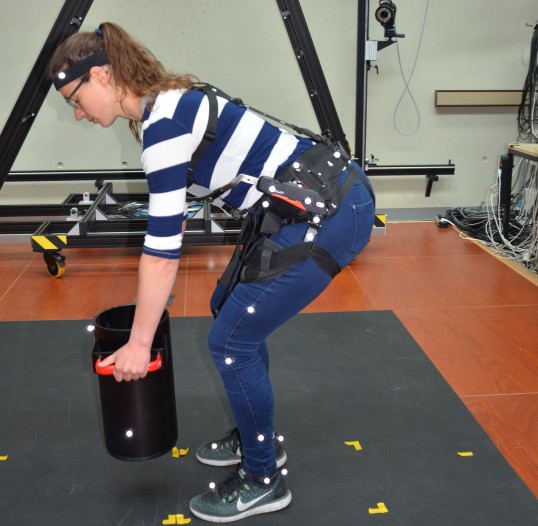Exoskeletons

Test arrangement for the laboratory testing of exoskeletons
Source: IFA
Exoskeletons have been used for some time to good effect in medical rehabilitation, for example in order to enable victims of spinal injuries to walk again. Exoskeletons specifically for use at commercial workplaces are now increasingly appearing on the market. These systems are intended to provide mechanical assistance during strenuous tasks such as the lifting of loads or the performance of work overhead.
The biomechanical efficacy of exoskeletons in industrial applications is however still largely unknown. Growing interest in their use at industrial workplaces can already be observed, though. Their use has already been piloted in a number of companies. Companies are therefore required to conduct a risk assessment in accordance with the German Occupational Health and Safety Act (ArbSchG) for workplaces at which exoskeletons are to be used.
Against this background, the IFA has conducted a joint research project (one partner in the project is the DGUV Trade and Logistics expert committee) in which a draft risk assessment has been produced for exoskeletons and their use. This draft is to be submitted to the group responsible for clinical practice guidelines for exoskeletons in the Association of the Scientific Medical Societies in Germany (AWMF), where it can also be developed further in cooperation with other parties. (The guidelines concerning the use of exoskeletons in a professional context for primary, secondary and tertiary prevention of work-related musculoskeletal disorders have been announced and their completion is planned for the end of 2019.)
Diverse experience, from spheres including machine safety (such as collaborative robots), personal protective equipment and risk analysis of physical stresses at work, was taken into account in the safety assessment of the use of exoskeletons. The exoskeletons available on the market often fail to give adequate consideration to the observations concerning safety, in some cases despite claims to the contrary by their manufacturers.
The model risk assessment provided here is intended to facilitate the identification and assessment of hazards in companies and thus to contribute to the safe use of exoskeletons in industry.

